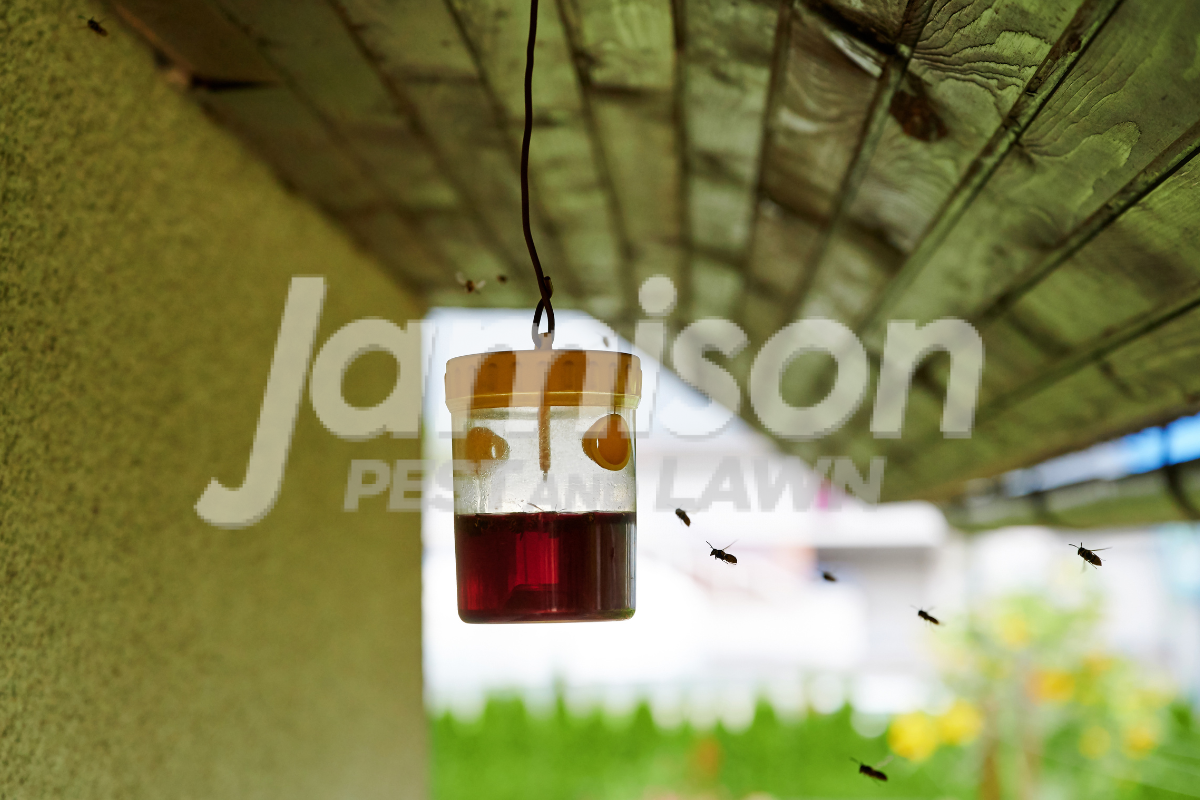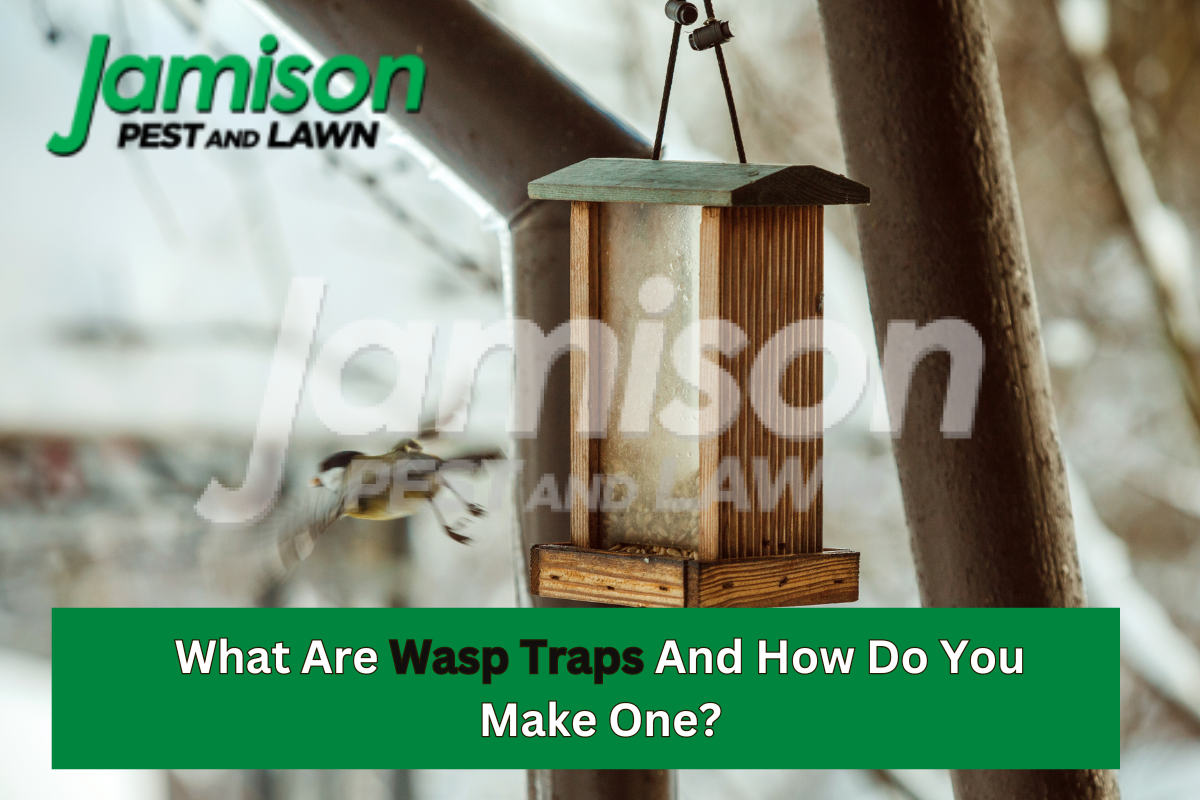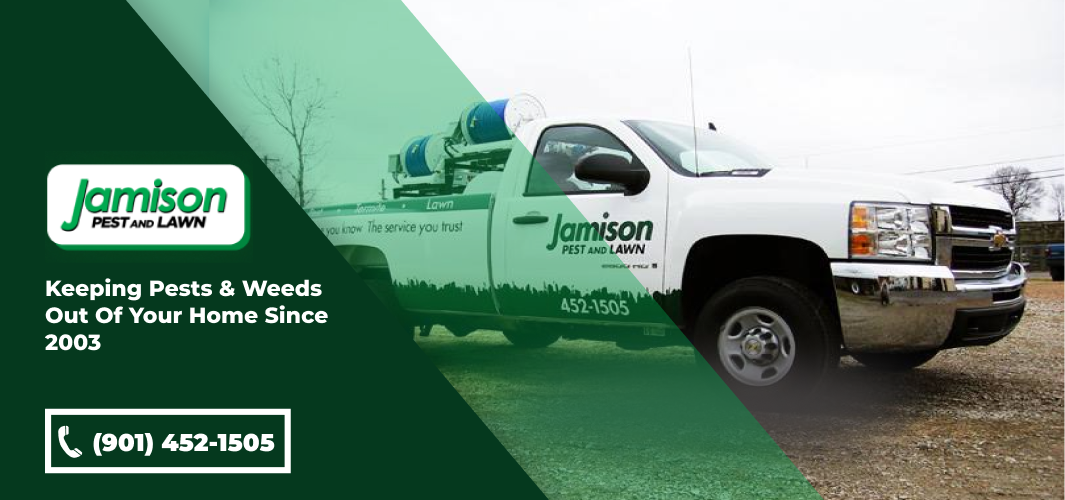As a pest control expert, I often get calls from homeowners dealing with wasp infestations. These stinging insects can be a real nuisance and even pose a threat to those who are allergic to their venom. While professional extermination is always an option, there are also some effective DIY wasp traps you can make at home to help control the population.
What Are Wasps? Why Do You Need To Be Aware Of Them?
Before we dive into making traps, let’s first understand a bit about the pests we’re trying to catch. Wasps are a type of stinging insect that belongs in the same category as ants and bees. Unlike bees, however, wasps are predatory and will actively hunt other insects to feed their young.
The most common wasps found around homes include:
Paper Wasps: These slender, brown wasps build exposed nests that resemble an upside-down umbrella made of a papery material.
Yellow Jackets: These wasps are black and yellow striped, known for their aggressive behavior and often nest underground or in walls.
Hornets: Larger and more robust than other wasps, hornets build large paper nests and have a particularly potent sting.
Mud Daubers: These solitary wasps construct nests out of mud, often in sheltered locations such as under eaves or in attics. They are known for their distinct elongated bodies and are generally less aggressive than other wasp species since they mainly live alone, without colonies.

To learn more about these types of wasps, and other things related to these pests, check out our guide: Identifying Common Wasp Species & Wasp Control Services: Know Your Foe
What Are The Characteristics Of Wasp Traps?
Wasp traps offer several advantages over traditional methods of control:
- Non-Toxic: Many traps use simple household items and avoid the use of harsh chemicals.
- Targeted Control: Traps catch wasps without harming beneficial insects like bees.
- Monitoring: Traps allow you to gauge the severity of an infestation.
- Prevention: Putting traps in place early on can deter wasps from establishing new nests.
How Do You Make A Wasp Trap?
Now that you understand the importance of wasp traps, let’s look at a simple and effective DIY trap you can make at home.
Effective DIY Wasp Trap
If you want to build a wasp trap on your own, but don’t know how to do it, don’t worry. In this section we will discuss how to make a DIY wasp trap:
Materials Needed:
- 2-Liter plastic bottle
- Sharp knife or scissors
- Piece of wire or string
- Sweet bait (juice, soda, etc.)
- Water

Step 1: Prepare the Bottle
Using your knife or scissors, cut the plastic bottle about one-third of the way down from the top until you have two separate pieces.
Step 2: Create the Funnel
Flip the top portion of the bottle upside down and insert it into the bottom portion, creating a funnel. The narrow opening should point inward, making it easier for wasps to enter but difficult to exit.
Step 3: Add the Bait
In the bottom portion of the bottle, mix your sweet bait with water. Sugary liquids like juice or soda work well at attracting wasps.
Step 4: Hang the Trap
Use the piece of wire or string to create a hanger for your trap. Suspend it from a tree branch, eave, or other area where you’ve noticed wasp activity, keeping it away from high-traffic areas.
Step 5: Monitor and Replace
Check your trap regularly, and replace the bait solution as needed. Once the trap becomes full, you can dispose of the captured wasps safely.
Advanced Trap Designs
While the plastic bottle trap is a simple and effective option, there are also more advanced designs to consider:
Jar Traps: These are similar to bottle traps, but utilize glass jars which are more durable and easier to clean.
Cone Traps: Cone traps feature a cone-shaped entrance that makes it even harder for wasps to escape.
Pheromone Traps: These traps use chemical lures that mimic the scent of a wasp nest to attract more insects.
Best Wasp Traps On The Market In 2024
If you don’t want to make your own, here are some of the top-rated wasp traps with positive feedback from homeowners in Tennessee.
RESCUE!® TrapStik® for Wasps
This is a revolutionary wasp and bee trap, proudly made in the USA. This innovative trap features exclusive VisiLure® technology, specifically designed to attract and capture pesky insects like wasps, red wasps, mud daubers, and carpenter bees. This trap is highly effective in catching both queens and workers, providing continuous protection from spring through to fall. To further enhance its effectiveness, the trap includes unique Glue Guards that create a protective barrier around the sticky surface, reducing the likelihood of unintended catches such as birds.
Protecker Wasp Trap
This is one of the top-rated wasp traps available on the market. Protecker Wasp Trap is a durable, eco-friendly solution for trapping wasps, yellow jackets, and flies without harmful chemicals. Its six-entry design and natural bait attract insects effectively, while its weather-resistant ABS material ensures long-lasting outdoor use. Keep your home and garden safe with this non-toxic, easy-to-hang trap.
Enoz® Trap-N-Kill
The Enoze Trap-N-Kill Yellow Jacket, Wasp & Hornet Trap comes with convenient refills that allow you to reuse the product for years. It works by allowing wasps to enter through the sides of the trap, lured in from bait, and then keeping them trapped inside where they eventually fall and get stuck in the liquid base. Homeowners love this product because there are no zapping, lotions, sprays, or electrical cords involved, keeping the trap subtle.
Tips For Success
To get the most out of your wasp traps, keep these tips in mind:
- Set up traps in early spring before wasps establish new nests.
- Distribute several traps around your property for better coverage.
- While traps can help reduce population size, locating and removing active nests is crucial for complete control.
- It may take some time for traps to start catching wasps effectively.
- Exercise caution when removing and disposing of trapped wasps to avoid being stung.
When Should You Call A Professional?
While DIY wasp traps can be effective for minor infestations, there are situations where professional pest control services are recommended:
Severe Infestations: If you’re dealing with an overwhelming number of wasps or multiple large nests.
Hard-to-Reach Nests: Nests located in difficult or dangerous areas, like high up on a roof or inside a wall may require specialized assistance.
Allergies: Those with severe allergies to wasp stings should avoid handling traps or nests.
Persistent Problems: If DIY methods fail to resolve the issue after repeated attempts, you’ll want to call a professional. Remember, attempting to remove large or aggressive wasp nests yourself can be extremely dangerous.
Best Wasp Control Services In Tennessee
Wasp traps offer a simple and effective way for homeowners to take control of wasp infestations. By understanding these pests and following the proper techniques, you can create DIY traps that safely catch wasps without harming other beneficial insects.
However, DIY wasp traps can only get you so far. For a more focused approach, don’t hesitate to call in the experts at Jamison Pest and Lawn. We can come to the rescue when the situation becomes too severe or poses a safety risk to you or your family. With our control techniques, you can enjoy your outdoor space without the constant threat of painful wasp stings. Contact us today at (901) 452-1505 to learn more.




